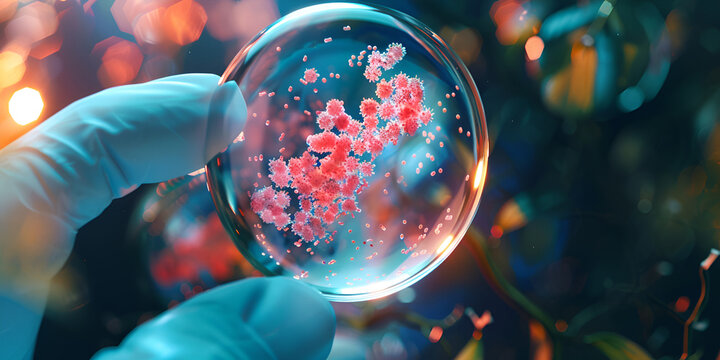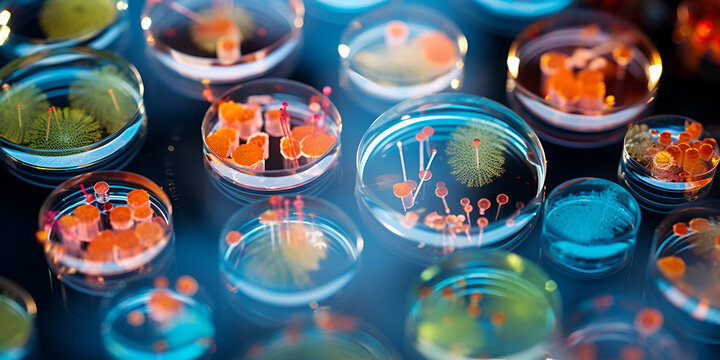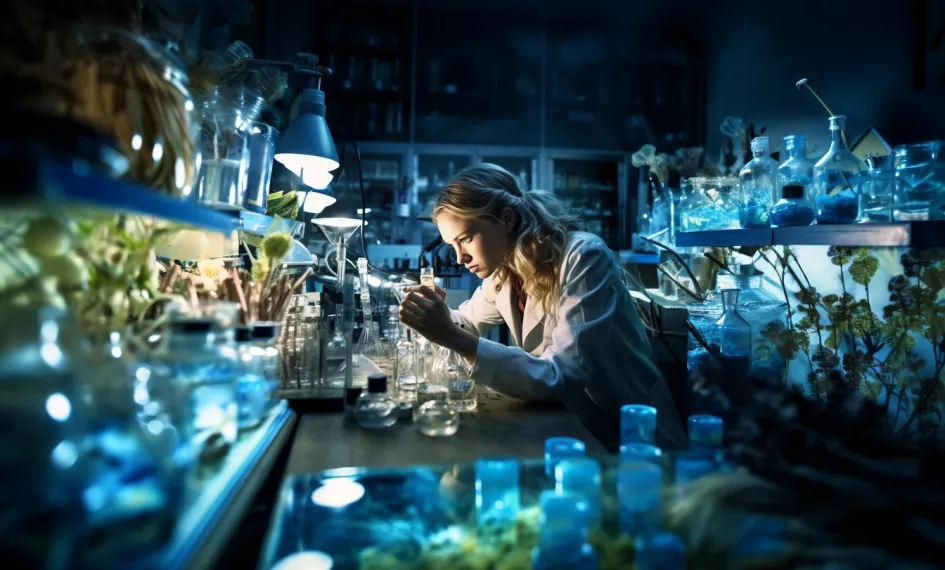Microbiology is the branch of science that deals with the study of microorganisms, which are tiny, often microscopic, entities including bacteria, viruses, fungi, protozoa, and algae. This field encompasses various aspects such as the biology, ecology, physiology, genetics, and pathology of these organisms. Microbiologists study these microorganisms to understand their roles in various environments, their interactions with other living organisms, and their impact on health, disease, and industry.
Applications of microbiology range from medical microbiology, which focuses on pathogens and infectious diseases, to industrial microbiology, which involves the use of microbes in processes such as fermentation, bioremediation, and biotechnology.
What are the types of microorganisms?

Microorganisms, often referred to as microbes, are tiny organisms that are usually too small to be seen with the naked eye. They include a diverse group of organisms classified into several major categories based on their characteristics. The main types of microorganisms are bacteria, archaea, fungi, protozoa, algae, viruses, and prions.
Bacteria are single-celled prokaryotic organisms that lack a nucleus, with examples like Escherichia coli (E. coli) and Staphylococcus aureus. They come in various shapes such as rods (bacilli), spheres (cocci), and spirals (spirilla). While some bacteria are beneficial, others can cause diseases. Archaea are also single-celled prokaryotic organisms, similar to bacteria but with distinct genetic and biochemical differences. Examples include methanogens and halophiles, often found in extreme environments such as hot springs, salt lakes, and deep-sea hydrothermal vents.
Fungi are eukaryotic organisms that can be unicellular (yeasts) or multicellular (molds and mushrooms). Examples include Saccharomyces cerevisiae (yeast) and Penicillium notatum (mold). Fungi play a crucial role in decomposition and nutrient cycling, though some can be pathogenic to plants and animals. Protozoa are single-celled eukaryotic organisms that are often motile, such as Amoeba, Paramecium, and Plasmodium (which causes malaria). They can be free-living or parasitic and typically inhabit water or moist environments.
Algae are photosynthetic eukaryotic organisms that can be unicellular or multicellular. Examples include Chlorella (unicellular) and kelp (multicellular). Found in aquatic environments, algae are important for producing oxygen and serving as the base of many food webs. Viruses are acellular entities requiring a host cell to replicate, with examples like the influenza virus, HIV, and SARS-CoV-2 (which causes COVID-19). They consist of genetic material (DNA or RNA) enclosed in a protein coat and are not considered living organisms because they cannot carry out metabolic processes independently.
Prions are infectious proteins that cause abnormal folding of normal cellular proteins, leading to diseases like Creutzfeldt-Jakob disease (CJD). Unlike other microorganisms, prions lack nucleic acids and uniquely cause diseases by altering the structure of normal proteins in the host. These categories encompass a wide variety of life forms, each playing distinct roles in ecosystems, human health, and industry. While some microorganisms are pathogenic and cause diseases, many are beneficial and essential for processes like digestion, fermentation, and nutrient cycling.
What are the branches of microbiology?

Microbiology is the study of tiny organisms, like bacteria, viruses, and fungi, and how they interact with people, animals, plants, and the environment. This field has many branches, each focusing on different types of microorganisms or their uses.
Bacteriology is the study of bacteria, looking at their classification, identification, and how they interact with hosts and the environment. Virology focuses on viruses, exploring their structure, classification, evolution, and how they infect host cells. Mycology studies fungi, including their genetics, roles in health and industry, and their impact on ecosystems. Parasitology examines parasites, their life cycles, and how they cause diseases in hosts.
Phycology, also known as algology, is the study of algae, their classification, roles in ecosystems, and industrial uses. Immunology focuses on the immune system, investigating how it responds to pathogens and functions in health and disease. Microbial genetics looks at the genes of microorganisms, their functions, and uses in genetic engineering and biotechnology. Environmental microbiology studies microorganisms in the environment, their roles in nutrient cycles, pollution control, and biodegradation.
Industrial microbiology applies microorganisms in processes like making antibiotics, enzymes, and biofuels. Food microbiology examines microorganisms in food, looking at food spoilage, foodborne diseases, and the use of microbes in food production. Medical microbiology studies microorganisms that cause diseases in humans, focusing on identifying pathogens and developing treatments. Agricultural microbiology looks at microorganisms in agriculture, such as those affecting plant health and soil fertility. Veterinary microbiology focuses on microorganisms that cause diseases in animals, covering diagnosis, treatment, and prevention.
These branches show how microbiology is used in healthcare, industry, agriculture, and environmental science. Each branch helps us understand microorganisms better and their roles in different areas.
How are microorganisms studied in microbiology?

In microbiology, scientists study tiny organisms like bacteria, viruses, and fungi using different methods to learn more about them. One way is through microscopes, which make them look bigger so scientists can see their shapes and structures.
Microorganisms can also be grown in special dishes with nutrients, called agar plates, or in liquid broth cultures. Scientists use tools like PCR to amplify DNA and identify specific microorganisms. They also do tests to see how microorganisms behave, like whether they make certain enzymes or use different chemicals.
Another way scientists study microorganisms is by using antibodies, which are special proteins that stick to specific parts of microorganisms, helping scientists find and study them.
These methods, along with others like genetic sequencing and advanced imaging, help scientists understand how microorganisms work and how they affect the world around us.
How is microbiology applied in various fields?

Microbiology is applied across diverse fields, playing a crucial role in healthcare, agriculture, industry, environmental science, and more. In healthcare, microbiologists diagnose and treat infectious diseases, develop vaccines, and study antibiotic resistance.
Agriculture benefits from microbiology through crop protection, soil health improvement, and biotechnology for crop enhancement. In the food industry, microbiologists ensure food safety and quality, while also utilizing microorganisms in fermentation processes for food production. Environmental science relies on microbiology for bioremediation of pollutants and wastewater treatment.
In industry, microbiology is used in biopharmaceutical production, biofuels, and the development of biodegradable plastics. Veterinary medicine utilizes microbiology for disease diagnosis, prevention, and food safety in animal-derived products. Microbiology research and education are fundamental for understanding microbial processes and training future scientists and professionals.
Overall, microbiology’s applications drive advancements in health, food security, environmental sustainability, and technological innovation, benefiting society in myriad ways.
Final Words
Microbiology is a vital field of science that studies tiny organisms called microorganisms. These include bacteria, viruses, fungi, protozoa, and algae. Microbiology has many branches, such as medical microbiology, which focuses on diseases and treatments, and environmental microbiology, which looks at how microorganisms interact with their surroundings.
Techniques like microscopy and culturing help scientists study these tiny creatures, and microbiology has many applications, from healthcare to industry to environmental management. In the future, microbiology will continue to play a crucial role in understanding and addressing global health challenges and advancing biotechnology.
